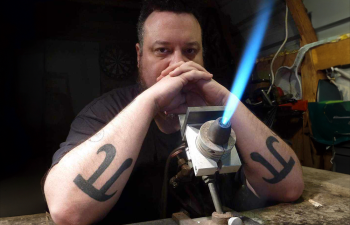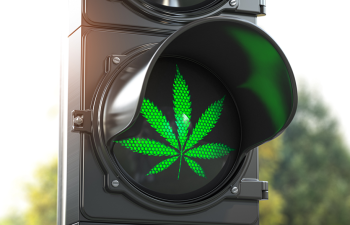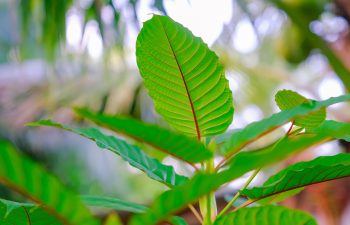Smoke Shop Music: Don't Be Afraid to Get Weird
By Joshua Scott Hotchkin
Music is a fundamental aspect of the human experience. Its importance and effect cannot be overstated. Music reaches us in ways which nothing else quite can. That is why it’s crucial to carefully consider the music that fills your business space.
The smoke shop came into prominence in the haze of late 1960s counterculture. It was not just a place to buy and sell, but a space which highlighted the counterculture, and gave the social dissidents a place to meet and share eccentricities. It served as something akin to a community center—maybe even a library—for the local outsiders, eccentrics and weirdos. And the soundtrack for these rendezvous points was not Top 40 radio fodder, but rather the underground, independent and subversive music of its day.
Somewhere along the way, however, things went awry, and the idea of counterculture slowly became conflated with youth culture. While there is often plenty of overlap, these two things are not the same. Nonetheless, the fallacy has prevailed, and as a result, the past few decades have seen a shift in the emphasis of in-store music from counterculture to merely youth culture. Even more disheartening is the likelihood of encountering bland and soulless pop music, churned out by the industrial entertainment complex, in a modern smoke shop or dispensary.
Last week I stopped by my favorite local dispensary and began a conversation with the 52-year-old guy behind the counter. He told me that he had been experimenting with switching the store music from Top 40 to Country and had gotten a lot of positive responses from customers. Of course, this is specific to Oklahoma, so it might not be as well-received elsewhere. Still, it made me ponder the age demographic of their customer base.
Take some risks and get a little weird. You might find that not only have you breathed some new life into your store’s atmosphere, but that it is also breathing some new life into you.
Sources do not always agree, but a conservative estimate would put the majority of a smoke shop or dispensary’s customer base over the age of 35. Based on this, it is reasonable to infer that the people walking into your store probably aren’t enthusiasts of the latest pop chart-toppers. The alleged adults who are still clinging to music contrived for listeners aged 12-20 are not statistically likely to be your customer base.
This leaves you two choices, the first of which is to play music which is demographically appropriate for your customers, depending on their average age and where you are located. This is the safe route. Country, folk, Americana, and classic rock, for example, are generally crowd-pleasers. However, I do not necessarily recommend this approach. We can do better.
The second choice is to offer an eclectic variety of music which starts conversations with your customers. This doesn’t mean that you should assault them with extreme weirdness—death metal, bands only you and three friends have heard of, etc. However, this does mean that a wide range of musical choices can invite curiosity and create a memorable experience for the customer. Better yet, if you and your employees are familiar with the music, it opens an opportunity for discussions, which keeps your patrons in the store and perusing the shelves. With how heated and divisive most topics have become, music remains as one realm in which it’s easy to have pleasant, respectful conversations. It still unites more than it divides, which is part and parcel of its underlying allure.
Let me give you an example. ‘Icaro’ is the name of the music passed down for thousands of years in indigenous cultures in South America. These songs, still in use today, were sung by shamans during entheogenic rituals and ceremonies hundreds of generations ago. On one hand, listening to an Icaro is like extending your ears into an ancient, primitive realm. On the other hand, it is like listening to the origin of melodies which still exist in modern music—completely timeless and evocative. These songs are fascinating, and even the casual listener can’t help but feel intrigued by what they are hearing. Likely, they’ll track the music down on their own later. Maybe—just maybe—it becomes a regular part of their musical diet; each time they listen, they’ll remember where they were when they first heard it.
There are other ways in which you can turn music into opportunities, and not just background filler. For instance, you can form relationships with local musicians, giving each of you an opportunity for cross-promotion. You can play their music in your store, and perhaps even showcase a record sleeve or CD case on the counter to let customers know what they are hearing. Sharing their music on your social media can also boost their exposure while providing you with engaging content for your audience. In return, you could ask them to do the same. To further deepen these relationships and foster goodwill in your community, consider hosting in-store events featuring local musicians.
The obstacles to rethinking your musical backdrop are twofold. First, there’s the natural inclination to maintain a youthful vibe. Second, and equally important, is the need to indulge the tastes of your younger employees, who are in this environment regularly for hours on end. My response to both dilemmas: Don’t be so cynical. Young people are perfectly capable of discovering and enjoying music outside of the pop zeitgeist. The Netflix series Stranger Things has illustrated this by putting decades-old songs from the likes of Kate Bush and Metallica back into the spotlight, brighter than ever before. Merely catering to youth without inspiring it is an empty strategy that will not benefit anyone—your employees, your customers, or your business.
Do not underestimate the impact that music has on your business. Avoid frivolous choices that either pander to specific elements or are based on cynicism. Do not just play it safe or do what is the most obvious. Take some risks and get a little weird. You might find that not only have you breathed some new life into your store’s atmosphere, but that atmosphere is also breathing some new life into you.












